We clean the kettle from scale using available means
Even if you have acquired a home water filtration system and boil only purified water to make tea,
the formation of scale cannot be avoided anyway. Filters are not able to remove all substances dissolved in water responsible for the formation of lime deposits.
And sooner or later you will find that the sides and bottom of your favorite whistling kettle or the heating element of an electric boiler are covered with a layer of dirty yellow plaque. This means that it is time to remember how to descale the kettle and restore its cleanliness both outside and inside.
When cleaning, keep in mind that not all products are equally suitable for conventional and electric vessels.
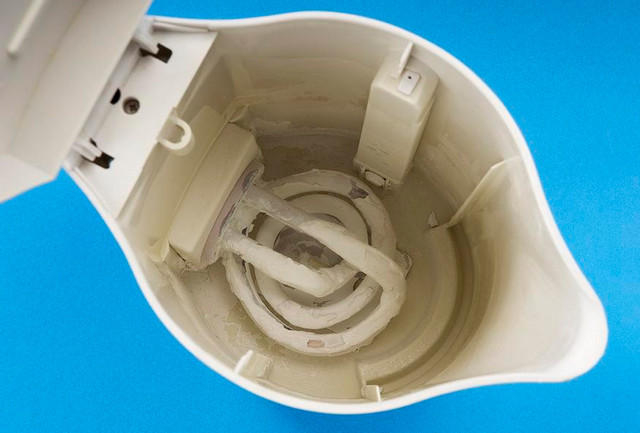
Why you need to remove limescale
There are several reasons for this, and each is quite serious.
- The lime layer prevents heat transfer. If this is not fatal for an ordinary stainless steel kettle, then the electric one can simply burn out. Heat from the coil or disc is not transferred to the water; the metal is subject to thermal overload. In ordinary kettles, this increases the gas consumption: the water heats up more slowly.
- The scale layer prevents the vessel from being kept clean. Particles of lime sediment fall into your cup, and all this garbage is not at all good for the body.
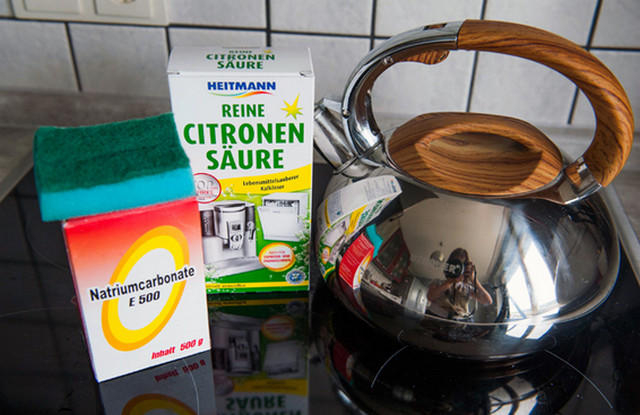
Descaling agents
In the store you can buy ready-made descaling products. Some of them are quite effective, others may not give the desired effect.
And it depends not so much on the quality of household chemicals as on other parameters: the composition of the water in your water supply system, the thickness of the layer of lime deposits, etc.
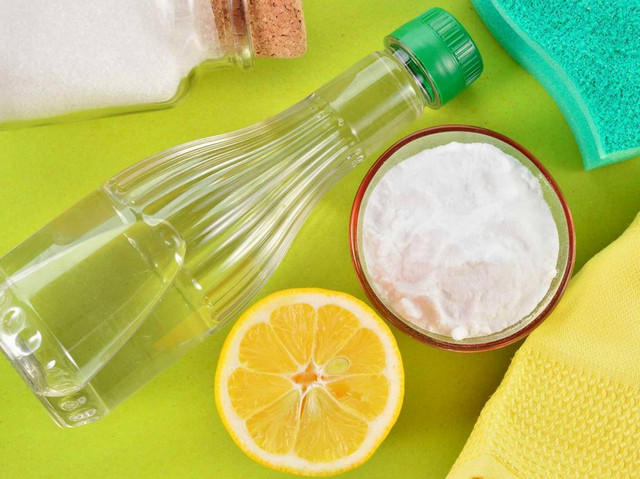
How to descale the kettle using home methods
Lime deposits are successfully removed using simple and cheap means:
- citric acid;
- table vinegar or apple cider vinegar;
- soda;
- lemons, apple peels, or potato peels;
- pickle from cucumbers or tomatoes;
- carbonated drinks: "Coca-Cola", "Sprite", "Fanta".
♦ Citric acid you can descale any kettle: stainless steel, ceramic, enamelled, electric plastic or glass. This simple substance removes small to medium build-ups.

Ingredients: water - about 500 ml and citric acid - 1-2 tbsp. spoons (depending on the degree of soiling).
Pour water into a kettle and boil, then pour citric acid into boiling water and wait until the water cools down for about 1-2 hours (be careful - acid in hot water will "hiss"). If the scale is not old, then it will come off by itself, otherwise you will need to make a little effort: carefully clean the walls and bottom with a plastic washcloth or brush.
Metal hard scourers cannot be used for descaling.
Citric acid can be substituted fresh lemons: Coarsely chop one or two lemons, boil them and leave to cool.
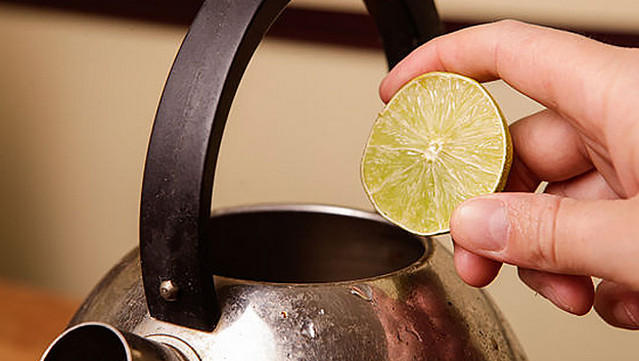
♦ Manufacturers of electric kettles do not recommend using vinegar to remove mineral deposits - after all, it is too aggressive. But sometimes you can't do without this powerful tool.
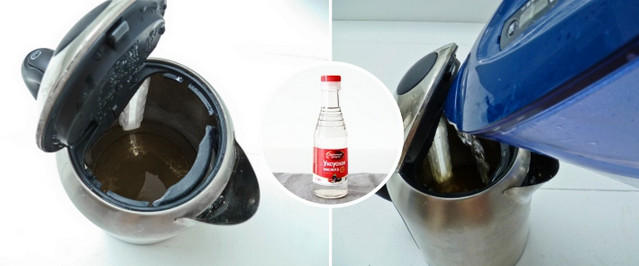
The method is suitable for: plastic, glass and metal teapots with a very large amount of old scale.
Ingredients: water - about 500 ml and vinegar 9% - a little less than 1 cup or vinegar essence 70% - 1-2 tbsp. spoons.
Pour water into a kettle and boil it, then pour acetic acid into boiling water and leave the scale to soak in the solution for 1 hour. If the scale did not go away on its own, but only loosened, then it will need to be removed with a sponge. Remember to boil water once or twice in a clean kettle, and then rinse it thoroughly to rinse off any remaining vinegar.
♦ Enamel and aluminum dishes are afraid of aggressive acids, so the first 2 methods of removing limescale are not suitable for them, but the usual one can help you soda solution.
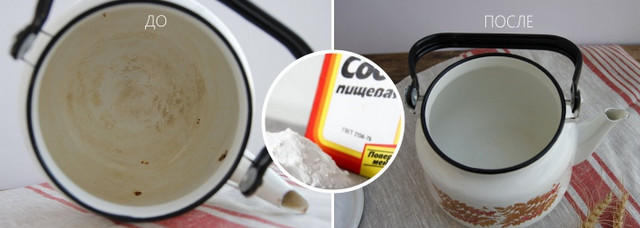
The method is suitable for: descaling both in ordinary enamel and aluminum teapots, and in any electric kettle.
Ingredients: baking soda, and better soda ash - 1 tbsp. spoon, water - about 500 ml (the main thing is that it covers all the limescale).
Recipe 1: to remove scale from the walls of an enamel or aluminum kettle, you must first mix soda with water, then bring this solution to a boil, and then leave it to simmer over low heat for half an hour. At the end of the procedure, we wash off the remaining soda, for which we boil clean water 1 time, drain it and rinse the kettle.
Recipe 2: to wash an electric kettle with soda, you need to boil water, make a soda solution, and then let it cool for 1-2 hours. A more gentle way is to pour soda into the boiling water, and then leave the solution until it cools completely - during this time, the mineral deposits will become softer, and it will be easier to wash them by hand.
♦ Small deposits are successfully removed boiling apple peels or potato peels.
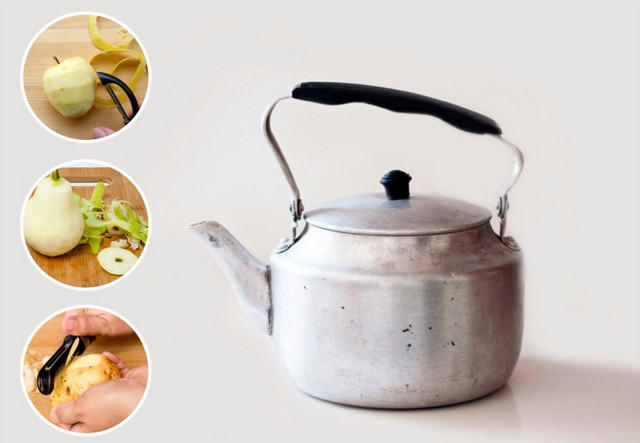
This product is suitable either for preventive maintenance or if the limescale is still weak.
The method is suitable for: descaling conventional enamel and metal teapots.
Ingredients: apple, pear or potato peelings.
I put block, pear or washed potato peelings in a kettle, fill with water and bring to a boil. As soon as the water boils, leave the peel to cool for 1-2 hours, and then wash off the softened plaque with a sponge.
♦ Handles limescale layers well cucumber or tomato pickle... The organic acids contained in it dissolve lime deposits. But then it is quite problematic to eliminate the smell of pickles, and it does not harmonize too much with tea and coffee.
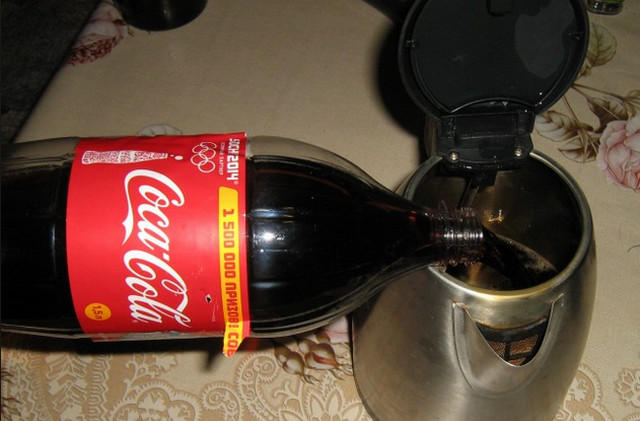
♦ Carbonated drinks perfectly dissolve stubborn lime layers due to the content of phosphoric acid. Many people know that Coca-Cola can be cleaned from scale and rust not only in the kettle, but also in other household items.
Coca-Cola removes old grease stains in the sewers, it dissolves traces of rust on old bathtubs and washbasins, etc.
The method is suitable for: descaling in ordinary stainless steel teapots and for electric kettles, but with caution for enameled and tin ones. If you want to descale a white kettle, it’s better not to do it with Coca-Cola or Fanta. These intensely colored liquids leave a colored coating on light-colored materials, which will have to be dealt with separately. Take a better colorless soda: Sprite, 7UP. The effect will be the same as when cleaning with Coca-Cola, but without the color effects.
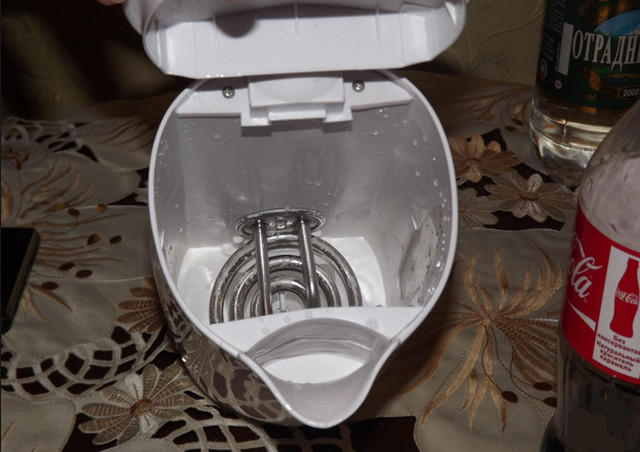
Before descaling the kettle with carbonated drinks, you must remove all the gas from them. Open a bottle of Coca-Cola and leave it open for a few hours before cleaning. Otherwise, when boiling the drink, it forms foam in such quantities that you will clean the kettle not only from the inside, but also from the outside, and at the same time the whole kitchen :).
This method is not the most effective and economical, but why not try it for fun?
How to deal with old deposits
The most stubborn, stubborn limescale deposits are removed in several stages. You will need baking soda, citric acid solution, and vinegar.
First, you wash the kettle, outside and inside, as much as possible. Then pour half a glass of soda inside, pour water and boil the solution for about 20 minutes. You can leave the soda solution to cool, or drain it right away. Soda itself does not remove scale, it will only help to cope with thick deposits.
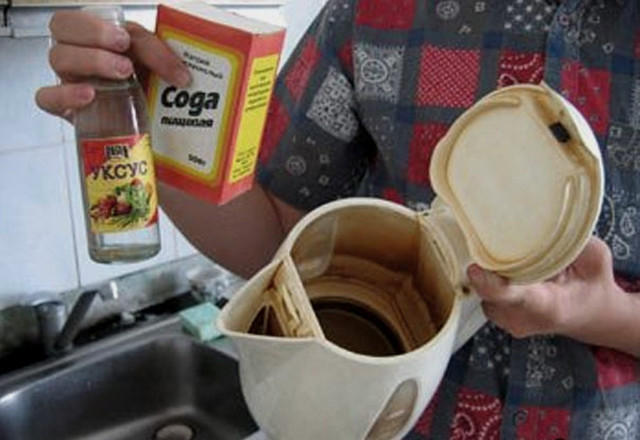
At the second stage of the fight against scale, you need to pour a solution of citric acid into the vessel: about 40 g of powder will be needed for 3 liters. Acid with soda, absorbed into the layers of scale, will react. This will generate gas, the bubbles of which will loosen the limescale.
When you merge the citric acid solution, you can boil the kettle with soda solution again, or you can immediately proceed to the next stage: act on the scale with vinegar, table vinegar or apple cider. Boiling with vinegar will dissolve the stubborn layers. Pour one third of the vinegar into the vessel, and add the rest with water and boil for 30 minutes over low heat. Drain the solution and wipe the inside of the vessel with a medium-hard scrubber (not a metal one).
Descaling the kettle with vinegar.
After cleaning, you will have to thoroughly rinse the kettle and boil the water in it two or three times, draining it. This method is only suitable for ordinary kettles, for electric kettles it can be overly aggressive and destructive.
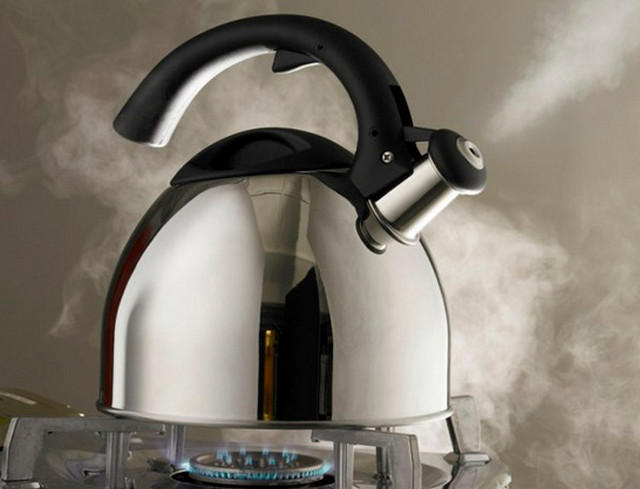
- Do not leave leftover water in the kettle after use. This habit increases the amount of calcium deposits on the walls of the container. Pour plant water or separately into a decanter and use cold or boil the amount of water you want to use.
- The more often you remove scale deposits, the easier it will be to do this. Descale the kettle at least once a month if the water is medium hard and once every two weeks if the water is hard. This will help preserve the device and extend its life.
- Use only filtered or distilled water for boiling.
- Rinse the inside of the kettle with a washcloth after each boil to remove even the slightest trace of scale.
How do I descale my kettle? Vinegar, citric acid or Coca-Cola? Checking folk ways to combat scale!
PS. Buy an electric kettle with a closed coil or heating disc. They are much easier to care for than models with an open coil. It will also be easier to remove the limescale that has appeared.
Note to the hostess.

